Ivan Čuk
Editorial
Roman Farana, Daniel Jandacka, Gareth Irwin
INFLUENCE OF DIFFERENT HAND POSITIONS ON IMPACT FORCES AND ELBOW LOADING DURING THE ROUND OFF IN GYMNASTICS: A CASE STUDY
Oya Erkut Atilgan
EFFECTS OF TRAMPOLINE TRAINING ON JUMP,
Hannah Clowes, Zoe Knowles
EXPLORING THE EFFECTIVENESS OF PRE-PERFORMANCE ROUTINES IN ELITE ARTISTIC GYMNASTS: A MIXED METHOD INVESTIGATION
Jerneja Fišer Kurnik, Tanja Kajtna, Klemen Bedenik, Marjeta Kovač
WHY PARENTS ENROL THEIR CHILDREN IN RECREATIONAL GYMNASTICS PROGRAMMES
Trevor Dowdell
ACHIEVEMENT GOALS AND MOTIVATIONAL CLIMATE
George Dallas, Paschalis Kirialanis
THE EFFECT OF TWO DIFFERENT CONDITIONS OF WHOLE-BODY VIBRATION ON FLEXIBILITY AND JUMPING PERFORMANCE ON ARTISTIC GYMNASTS
Haitao CHEN, Shu LIU, Mei. WANG, Yubin HUANG, Shuqing CUI, Weiai ZHOU
A CASE STUDY OF THE BODY WEIGHT MANAGEMENT OF AN ELITE GYMNAST DURING THE PREPARING PERIOD FOR 2012 OLYMAPIC
Heimo Nupponen and Seppo Penttinen
In Memory of Mikko Pehkonen
Ivan Čuk
Editorial
Dear friends,
In October 2013 we will celebrate 150 years since the first gymnastics club was established in Slovenia. As the weather in October is already cold and school and sport programs start in September after summer holidays, the main part of celebrations was set for June. A Big Sokol Zlet was held in Ljubljana with over 1000 participants and a few thousand spectators on 17 June 2013. Mr Borut Pahor, the President of the Republic of Slovenia, awarded 'Športni klub Narodni dom' with the Golden Order for Services in the civil field. In addition to the Zlet, an exhibition has opened in the National Gallery which includes several rewards that are available for public viewing for the first time, such as medals of the father of Slovenian gymnastics Dr Viktor Murnik: Legion of Honour from the French president, White Lion from the Czechoslovakian president, Sveti Sava from the king of Yugoslavia, Order for Service from the president of Yugoslavia. To date, the club has organised two world championships (in 1922 and 1970); its member Peter Šumi won the world championship title twice in a row in 1922 and 1926 (his gold medal from Lyon is on display) and the team from Slovenia won the 4th place in Torino in 1911. On display is a cup received as a gift from other teams in 1922; Miroslav Cerar's Olympic medals, Mitja Petkovšek's World and European championships medals, Sašo Bertoncelj's prizes and a laurel wreath from Zlet in 1933. In December, an academic symposium on Sokol's impact on life in Slovenia will be organised.
Big anniversaries are always opportunity to dig into archives. I encourage you to look into your country's history of gymnastics and submit articles on how gymnastics evolved there (e.g., like Abbie Grossfeld and Anton Gajdoš with friends have done already). After all, one of the definitions of learning is transmitting knowledge and experience from one generation to another.
With our Journal we wish to transmit knowledge of our researchers so that it can be applied to practice.
In the June issue we have seven articles. Researchers Roman Farana, Daniel Jandacka and Irwin Gareth united to explore the impact forces on elbows during the round off. The round off can be used on floor, vault, beam; it is used by man and women and the paper provides practical advise on the position for hands. Oya Erkut Atilgan from Turkey submitted the first article in our Journal related to trampolining. I hope it will encourage other trampolinist to participate with their research papers. The third article is from the United Kingdom by Hannah Clowes and Zoe Knowles. They explore the effectiveness of pre-performance routines of elite artistic gymnasts. As British gymnastics were vey successful at OG in London last year the article is well worth reading. The fourth article is from Slovenia: authors Jerneja Fišer Kurnik, Tanja Kajtna, Klemen Bedenik and Marjeta Kovač investigated what advantages parents anticipate to enrol their child in gymnastics. Trevor Dowdell from Australia submitted his paper 'Achievement goals and motivational climate in competitive gymnastics classes' which provides guidelines on how to promote successful climate in a club. George Dallas and Paschalis Kirialanis from Greece wrote an interesting paper on how the vibration method influences flexibility and strength. The last article is from China: Helen Chen provides a case study on diet for high performance gymnastics.
Unfortunately, there is some sad news to impair. A truly good friend (my first lecturer at an international judging course) and a member of our editorial board Mikko Pehkonen has passed away. We thank his friends from Finland for sharing their thoughts about Mikko.
Just to remind you, if you quote the Journal: its abbreviation in the Web of Knowledge is SCI GYMNASTICS J.
I wish you pleasant reading and a lot of inspiration for new research projects and articles.
Roman Farana, Daniel Jandacka, Gareth Irwin
INFLUENCE OF DIFFERENT HAND POSITIONS ON IMPACT FORCES AND ELBOW LOADING DURING THE ROUND OFF IN GYMNASTICS: A CASE STUDY
The round-off is a fundamental gymnastics skill and a key movement in the development of elite female gymnasts. The aim of this study was to determine whether differences in hand position during the round-off may influence the ground reaction forces and elbow joint moments in female artistic gymnastics. One international level active female gymnast from the Czech Republic participated in this study. Two force plates were used to determine ground reaction forces. A motion-capture system consisting of eight infrared cameras were employed to collect the kinematic data. The gymnast performed 10 trials of a round-off from a hurdle step to back handspring with a “parallel” hand position and 10 trials with a “T” shape hand position. Effect size statistics were used to establish differences in means. In conclusion “T” position of the second hand reduces vertical and anterior-posterior ground reaction forces. Differences in joint elbow moments and elbow kinematics indicated that the “T” position may prevent elbow joint complex and reduces potential of elbow injuries.
Keywords: biomechanics, gymnastics, round-off, upper extremities, prevention
Oya Erkut Atilgan
EFFECTS OF TRAMPOLINE TRAINING ON JUMP,
The purpose of this study is to examine the effects of 12-week trampoline training on static-dynamic balance, vertical jump and leg strength parameters in boys who do not exercise regularly. Twenty-eight 9-to10-year old boys were assigned to the trampoline training group (TG, N=15) and control group (CG, N=13) to examine effects of 12-week trampoline training (TT) on leg strength (LS), vertical jump (VJ), static balance (SB) and dynamic balance (DB). TG was given 12-week training, whereas no sport activities were assigned to CG. According to our results, differences between the pre-test and post-test bipedal SB, VJ, DB in TG are statistically significant (p<0.05). No significant difference was observed between the pre and post-test results in terms of unipedal SB, LS. Whereas in the CG, there was no significant difference between pre-test and post-test results based on any of the performance parameters (p>0.05). 12-week trampoline training increased bipedal SB-DB and VJ parameters; however, it had no effect on unipedal SB and LS parameters in boys. The trampoline training used in our study may form an example for the sports educators for improving strength and balance in children.
Keywords: trampoline training, postural balance, children, muscle strength, power.
Hannah Clowes, Zoe Knowles
EXPLORING THE EFFECTIVENESS OF PRE-PERFORMANCE ROUTINES IN ELITE ARTISTIC GYMNASTS: A MIXED METHOD INVESTIGATION
Competitive sport at the highest level demands consistency and precision in the transfer of skill across various environments, on multiple occasions, in order to produce optimal performance (Singer, 2002). Pre-performance routines (PPR) are sequences of motor, emotional, and cognitive behaviours performed immediately in advance of the execution of self-paced tasks (Cohn, 1990). The purpose of this study was to explore both content and variation of pre-performance routines (PPR) between the four apparatus within Women’s Artistic Gymnastics. Participants were purposely selected from former Great Britain international, female elite artistic gymnasts (n=9). This study employed a mixed-method, phased design. All participants completed the Test of Performance Strategies (TOPS; Thomas et al., 1999) in phase one. A purposeful sampling mechanism using descriptive statistics from questionnaire results generated five profiles for further qualitative exploration as to the application and effectiveness of PPR’s via semi structured interviews. Pen-profiling was used to compare and contrast common themes amongst the preparations for the apparatus. Results indicated differences between vault and beam exercise with regard to pre-performance state and preparation strategies linked to arousal/activation control and cognitive rehearsal. Gymnasts reported prior use of individualised and highly refined routines dominated by imagery and arousal/activation control. Specific PPR strategies were reported for each apparatus with some robust, consistent psychological skills training (PST) components within them. The results from this study demonstrate that each apparatus requires unique preparation strategies with regards to the achievement of an optimal psychological state for performance.
Keywords: elite gymnasts, imagery, females
Jerneja Fišer Kurnik, Tanja Kajtna, Klemen Bedenik, Marjeta Kovač
WHY PARENTS ENROL THEIR CHILDREN IN RECREATIONAL GYMNASTICS PROGRAMMES
The purpose of this study was to examine the motives of parents who enrolled their children in recreational gymnastics programmes at six primary schools and their auxiliary branches in the north-east part of Slovenia in the 2007/2008 academic year. The study included 386 parents who (after the programme ended) answered a questionnaire specifically designed for this study. Basic statistical parameters were calculated, and a one-way analysis of variance has been carried out in order to observe the differences in the motives of parents, according to their gender, age, educational level and gender of their child. The results of the study revealed that the most significant motive stated by the parents as a reason for enrolling children in a course was “because sport benefits the health of my child”. This indicates the awareness of parents about the usefulness of sport for the development and health of children. According to gender of parents, there were minor differences found, although differences in the structure of motives were revealed according to the age of parents, their level of education and gender of their child. The prevailing motives of parents indicate that the organisers of gymnastics courses should emphasise such organisation in schools, which will emphasise the effects of exercising on the health of children along with enjoyment and useful spending of free time.
Keywords: extracurricular programmes, recreational gymnastics, first three-year period, motives, parents
Trevor Dowdell
ACHIEVEMENT GOALS AND MOTIVATIONAL CLIMATE
This paper is a preliminary investigation into the motivational climate of competitive gymnastics classes. Motivational climate can be described as the gymnast’s relatively persistent collective perceptions of the achievement goal structure of their class. Twenty-eight male and 180 female competitive gymnasts from six metropolitan and four regional competitive gymnastics clubs in Queensland, Australia were surveyed with a draft of the Sports Class Environment Scale (SCES). Using the revised SCES subscales as dependent variables, multivariate analyses of variance were conducted to compare club type, gender, and competitive level. The low training hours and the high training hours classes were significantly different in their perceptions of the Ego Involvement of their motivational climate (p<0.01). Male gymnasts were significantly different to female gymnasts in perceptions of Ego Involvement (p<0.01), Affiliation (p<0.01) and Effort, Order & Organization (p<0.01) aspects of their class climates. This study demonstrates the potential value of creating class motivational climates high in both task mastery (Task Involvement) and comparative competence (Ego Involvement) for competitive gymnastics clubs. Because motivational climate is easier to manipulate than individual achievement goal dispositions, it is an important variable that should be better understood, described, developed, and manipulated by gymnastic coaches.
Keywords: achievement goals, motivational climate, competitive gymnastics
George Dallas, Paschalis Kirialanis
THE EFFECT OF TWO DIFFERENT CONDITIONS OF WHOLE-BODY VIBRATION ON FLEXIBILITY AND JUMPING PERFORMANCE ON ARTISTIC GYMNASTS
The purpose of this study was to examine the effect of different conditions of Whole Bode Vibration (WBV) on flexibility and jumping performance on artistic gymnasts. Twelve well trained gymnasts volunteered to participate in this study. They were performed under two different condition protocols. The first was examined as WBV combined with static stretching condition (WBVSS) and the second was examined as WBV. Flexibility and explosive strength tests were performed initially (Pre), immediately after the intervention (Post 1), 15 minutes (Post 15) and 30 minutes after the end of the intervention program (Post 30). A two-way ANOVA (condition * trials) with repeated measures on both factors was used. The level of significance was set at p < 0.05. Univariate analyses with Bonferroni adjustments (0.05/6) were selected as post hoc tests. The results revealed no significant interaction between conditions and trials in all examined variables (p>0.05). However, significant difference was found with respect to Sit&Reach test between pre and post 1 measurement (p=0.002). Further, the percentage improvement of WBV was greater in SJ and CMJ variables compared to WBVSS
condition. Conclusively, both conditions (WBVSS and WBV) were effective on flexibility and jumping performance on artistic gymnasts and that each of themhas a specific effect on the examined variables.
Keywords: vibration, flexibility, muscle strength, stretching, gymnastics.
Haitao CHEN, Shu LIU, Mei. WANG, Yubin HUANG, Shuqing CUI, Weiai ZHOU
A CASE STUDY OF THE BODY WEIGHT MANAGEMENT OF AN ELITE GYMNAST DURING THE PREPARING PERIOD FOR 2012 OLYMAPIC
On the very first Science of Gymnastics Journal® in 2009, the authors have reported a successful weight-loss program in China National Gymnastics Team for preparing for 2008 Olympic Game, ever for an elite female gymnastic athlete (Chen, H., 2009).
So far as we know, to reduce body weight effectively is not an easy theme for everyone on the earth, even for elite gymnastics at the top level in the world, especially in the rush hour during the process of preparing for Olympic Games. Whenever these athletes need to lose a small amount (couple of pounds) of body weight, some issues are brought up. During the process in increased and decreased of body weight, how could the athlete keep their competition level and physical fitness stand at an optimal and high level? How to control the amount of daily training which should improve their skill and performance successfully? Based on the needs of higher and higher competition level day by day in the world, more and more details gained from training practice should contribute more evidence to the development of gymnastic. This report would like to present another successful weight-loss case from a male elite athlete in China National Gymnastics Team who struggled with injury while prepared for 2012 Olympic Game. Keywords: body weight management, Olympic Games, elite gymnastics.
Heimo Nupponen and Seppo Penttinen
In Memory of Mikko Pehkonen
Doctor of Physical Education Mikko Timo Ensio Pehkonen passed away on 26 January 2013 in the age of 60 years and 16 days, having suffered from a difficult illness. As numerous friends of Mikko said many times at the memorial service, he was a humane, humorous, wise, and sensitive person. As one of his British colleagues wrote: Mikko was a lovely friend and amazing teacher.
For most of his career, Dr. Pehkonen worked as a Senior Lecturer in Physical Education at the University of Lapland, Rovaniemi, Finland. He has been described by his colleagues as a thought-evoking character, who worked tactfully with students and had a great respect for nature. Mikko enjoyed the great outdoors of Lapland by canoeing, skiing, and hiking together with his family, students, and friends. Toward the end of his university career, he focused more and more on nature sports from the viewpoint of accessibility as well as nature tourism. In addition to his responsibilities as a Lecturer in Physical Education, Mikko took care of numerous tasks in the Faculty of Education and the University of Lapland. He was e.g. a reliable member of the University Board and the Faculty Council.
Artistic gymnastics was especially important for Mikko. He was known as a top-level gymnast, who developed the pedagogy of gymnastics, inspired the young, coached with enthusiasm, and was one of the founding members of the gymnastics club Taipumattomat in Rovaniemi. For years, Mikko gave a dedicated contribution to Finnish gymnastics organisations. Furthermore, he worked as an international gymnastics assessor since 1981 and was a member in the Editorial and Scientific Board of the Science of Gymnastics Journal.
After obtaining his Bachelor's degree in Physical Education in 1976, Mikko continued his studies and earned his Master’s degree in Physical Education in 1977 and his Licentiate degree in 1982. He obtained his Doctoral degree in Education in 1981. In 2000, he became a Doctor of Physical Education at the University of Jyväskylä; the topic of his Doctoral thesis is Learning and teaching motoric skills: gymnastics and physical education in comprehensive schools. Thereafter, Mikko participated in many extensive cross-sectional and longitudinal studies on Physical Education in Finland. The latest study that he participated in began in the 1980s, and it discussed the effects of Physical Education in schools. As a researcher, Mikko collected data independently and with care, wrote scientific articles on gymnastics and served as a peer reviewer of scientific articles as well. Mikko supervised dozens of Master’s theses and took part in supervising Licentiate and Doctoral theses.
Mikko, who humbly did not very much bring out his other interests, wrote poetry, and was also interested in profound thinking and photography. Mikko, a valued pedagogue, a great humanist, and a distinguished promoter of gymnastics will be missed by his numerous friends in Finland and other countries.





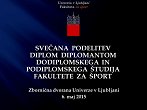
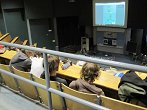
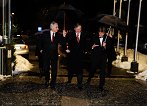



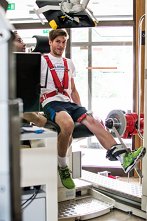

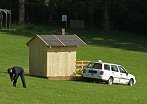

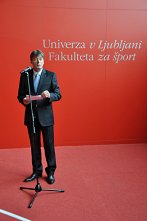





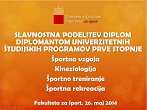
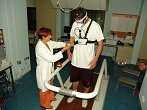











.png)